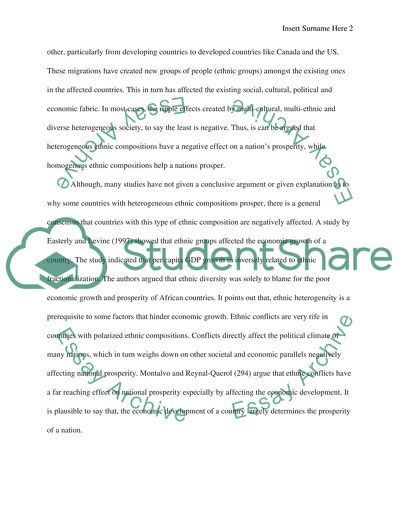Cite this document
(Homogeneous and Heterogeneous Ethnic Compositions and Their Effects on National Prosperity Coursework Example | Topics and Well Written Essays - 2250 words, n.d.)
Homogeneous and Heterogeneous Ethnic Compositions and Their Effects on National Prosperity Coursework Example | Topics and Well Written Essays - 2250 words. https://studentshare.org/social-science/1844093-homogeneous-vs-heterogeneous-ethnic-compositions-which-type-of-nation-prospers-above-the-other
Homogeneous and Heterogeneous Ethnic Compositions and Their Effects on National Prosperity Coursework Example | Topics and Well Written Essays - 2250 words. https://studentshare.org/social-science/1844093-homogeneous-vs-heterogeneous-ethnic-compositions-which-type-of-nation-prospers-above-the-other
(Homogeneous and Heterogeneous Ethnic Compositions and Their Effects on National Prosperity Coursework Example | Topics and Well Written Essays - 2250 Words)
Homogeneous and Heterogeneous Ethnic Compositions and Their Effects on National Prosperity Coursework Example | Topics and Well Written Essays - 2250 Words. https://studentshare.org/social-science/1844093-homogeneous-vs-heterogeneous-ethnic-compositions-which-type-of-nation-prospers-above-the-other.
Homogeneous and Heterogeneous Ethnic Compositions and Their Effects on National Prosperity Coursework Example | Topics and Well Written Essays - 2250 Words. https://studentshare.org/social-science/1844093-homogeneous-vs-heterogeneous-ethnic-compositions-which-type-of-nation-prospers-above-the-other.
“Homogeneous and Heterogeneous Ethnic Compositions and Their Effects on National Prosperity Coursework Example | Topics and Well Written Essays - 2250 Words”. https://studentshare.org/social-science/1844093-homogeneous-vs-heterogeneous-ethnic-compositions-which-type-of-nation-prospers-above-the-other.


